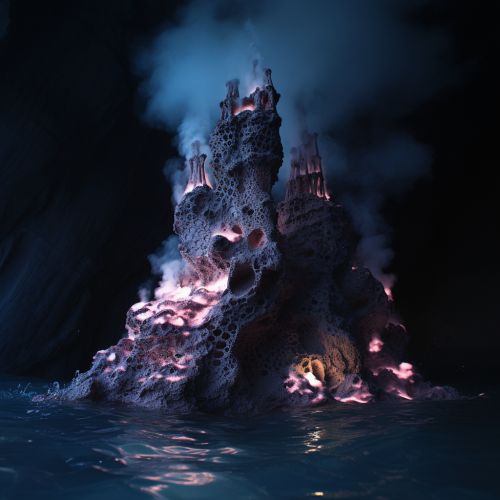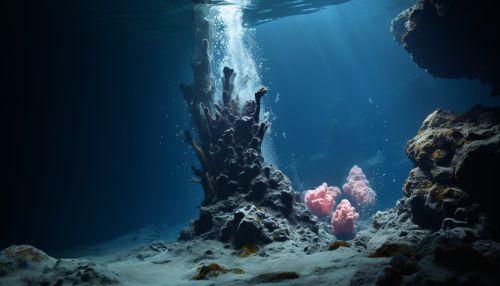The Ecology of Deep-Sea Hydrothermal Vent Communities
Introduction
Deep-sea hydrothermal vents are unique ecosystems found in the dark depths of the world's oceans. These vents, which spew out mineral-rich, superheated water, support a diverse array of organisms, from microscopic bacteria to large tubeworms and crustaceans. This article will delve into the ecology of these fascinating communities, exploring the physical and chemical environment of the vents, the organisms that inhabit them, and the complex interactions between these organisms.


Physical and Chemical Environment
Deep-sea hydrothermal vents are found along the mid-ocean ridges, where tectonic plates are moving apart and new oceanic crust is being formed. The water that is expelled from these vents is superheated by the magma beneath the oceanic crust and is rich in dissolved minerals, such as sulfur, iron, and copper. This water, which can reach temperatures of up to 400 degrees Celsius, creates a unique environment that is both physically and chemically extreme.
The pressure at these depths is immense, often exceeding 200 atmospheres. The water is also highly acidic due to the high concentrations of sulfur and other minerals. Despite these harsh conditions, a variety of organisms have adapted to thrive in this environment, forming complex and diverse communities.
Primary Producers
In most ecosystems, the primary producers are plants that use sunlight to photosynthesize and produce organic matter. However, in the deep-sea hydrothermal vent communities, sunlight is absent. Instead, the primary producers are chemosynthetic bacteria that use the energy from the chemical reactions involving sulfur, methane, and other compounds to produce organic matter.
These chemosynthetic bacteria form the base of the food chain in these communities. They are either free-living in the water or symbiotic, living inside the bodies of other organisms, such as tubeworms and clams. These symbiotic relationships are crucial for the survival of these larger organisms, as they provide them with a source of food in this nutrient-poor environment.
Fauna
The fauna of deep-sea hydrothermal vent communities is diverse and includes a variety of invertebrates and fish. Many of these organisms have adaptations that allow them to survive in this extreme environment.
Tubeworms, such as Riftia pachyptila, are among the most conspicuous organisms in these communities. These worms lack a digestive system and instead rely on symbiotic bacteria in their tissues to provide them with nutrients.
Crustaceans, including shrimp and crabs, are also common. These organisms feed on the chemosynthetic bacteria and other organic matter. Some species, such as the yeti crab, have hairy appendages that are covered in bacteria, which they scrape off and eat.
Fish, such as the Zoarcidae eelpouts, are also found in these communities. These fish feed on the invertebrates and are, in turn, preyed upon by larger predators.
Ecological Interactions
The ecological interactions in deep-sea hydrothermal vent communities are complex and not fully understood. However, it is clear that the chemosynthetic bacteria play a crucial role in these ecosystems, providing the basis for the food chain.
The symbiotic relationships between the bacteria and organisms like tubeworms and clams are examples of mutualism, where both organisms benefit. The bacteria receive a protected environment and the chemicals they need for chemosynthesis, while the host organism gets a source of food.
Predation is also an important ecological interaction in these communities. The invertebrates and fish feed on the bacteria and each other, creating a complex food web.
Conservation and Threats
Deep-sea hydrothermal vent communities are threatened by human activities, particularly deep-sea mining. These vents are rich in minerals, such as copper and gold, which makes them attractive targets for mining. However, mining can destroy these fragile ecosystems and the unique organisms that inhabit them.
Conservation of these communities is challenging due to their remote and inaccessible location. However, efforts are being made to protect these unique ecosystems through the establishment of marine protected areas and the regulation of deep-sea mining.
